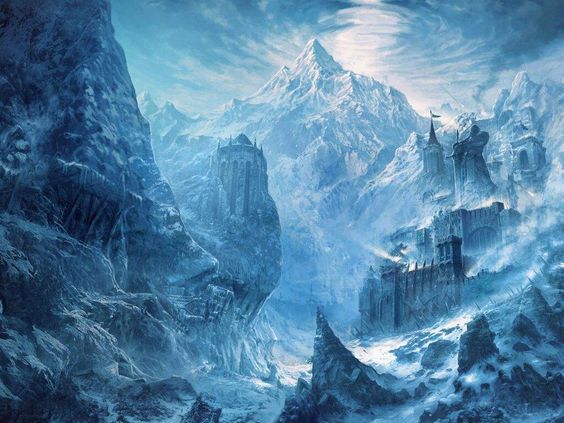
| Category | Highlands |
| Continent | Brucrumus |
| Region | Grashakh, Northern Hordelands |
| Alias | Olmi Hjark |
| Map | Giant Steps Mountains |
Giant Steps is a towering mountain range stretching from the evergreens of Laucentar to the glacial flow of Anzar. In the Horgon Era, the upper tracts of these mountains were controlled by the frost giants of Glangveif. They named the area Olmi Hjark, meaning home of the giants.
Today, Giant Steps is home to hill, stone, frost and fire giants. Most are descendants of the Titan Empires that once ruled northern Brucrumus. Around the Second Epoch, others came to these mountains in search of iron, copper, silver, and other resources. The largest of these were the orcs that would become the Orchish Empire, the Blooodbeards of Umahanbad and the giant-friendly Turkûn-Khâl of Bazandaggûl.
Along with goblins and other humanoids, the mountains are home to ice trolls in the tens of thousands. During the time of Glangveif, their ancestors were society's lowest class. Today, living in conditions much worse, they live in small quarrelsome tribal groups, fragmented, and prone to serving any group that pays them.
In the mountain's northwestern tracts, facing Shadow Rift, orcs have long been a problem for those around them. These orcs, more chaotic yet equally warmongering as their more sophisticated brethren, the Githirmil, are descendants of those who risked their lives mining around The Deafening. In the age of the Glangveif Monarchy (314 HE - 31), this section of Shadow Rift was the empire's only source for salt. In the last years of Glangveif, the salt mines were abandoned. The orcs and other slaves left behind. Today, numbering nearly a hundred thousand, orcs are spread across warring tribes that spend more time fighting among themselves than threatening their neighbors.
In addition to the area's giants and humanoids, are many dragons and other winged predators. Many of these creatures lair in abandoned ruins, deep caves, and dead mines. Many the work of giants, the mine shafts were very big.
Notable Areas
- Anzar
- Fort Hellstorm
- Grish, valley
- Haugald
- Hellstorm Pass
- Hrongeir
- Hungrur
- Ilorath
- Imgald
- Kangjald
- Kedmaer
- Nym-Zoedine
- Thalbasi, frost giant stronghold
- Torowkrorn
- Traghorn
- Tholamid